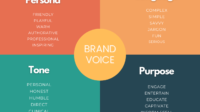
Unlocking Creativity: Designing Memorable Brand Experiences with Mockups
Introduction
In today’s competitive business landscape, creating a strong brand identity and memorable customer experiences is crucial for businesses of all sizes. Mockups have emerged as a powerful tool for designers and marketers, enabling them to visualize and refine their ideas before committing to production. By leveraging mockups effectively, businesses can unlock their creativity, streamline their design process, and deliver captivating brand experiences that resonate with their target audience.
What are Mockups?
A mockup is a digital or physical representation of a product, packaging, or other marketing material that mimics its appearance and functionality. They provide a preview of how a final design will look and work in the real world, allowing designers to make informed decisions throughout the development process.
Types of Mockups
Mockups can be categorized into two main types:
- Static Mockups: These present a fixed representation of the design, capturing a specific moment or perspective. Common examples include website mockups, packaging mockups, and logo mockups.
- Interactive Mockups: These allow users to navigate and interact with the design as if it were a real product. They are particularly useful for simulating user experiences and gathering feedback.
Benefits of Using Mockups
Incorporating mockups into the design process offers numerous benefits:
- Visualize Ideas: Mockups provide a tangible representation of abstract concepts, enabling designers to evaluate their ideas and make necessary adjustments before proceeding with production.
- Streamline Design Process: By testing designs in a simulated environment, designers can identify and resolve potential issues early on, reducing the need for costly rework or redesigns.
- Showcase Results: Mockups serve as an effective way to present designs to clients and stakeholders, facilitating communication and ensuring alignment on the final product.
- Enhance Customer Experiences: Mockups enable designers to create more user-centric products and marketing materials by simulating real-world interactions and gathering feedback from potential customers.
- Reduce Production Costs: By validating designs through mockups, businesses can mitigate the risk of production errors and minimize the need for expensive reprints or reworks.
Designing Memorable Brand Experiences
To create impactful brand experiences using mockups, designers should consider the following principles:
- Align with Brand Identity: Mockups should reflect the brand’s core values, personality, and visual style. They should serve as an extension of the brand’s overall identity.
- Focus on User Experience: Mockups should prioritize the user’s perspective. They should consider ease of navigation, functionality, and overall engagement.
- Create Emotional Connections: Effective mockups evoke emotions and create a connection with the target audience. Designers should focus on visual aesthetics, storytelling, and the overall impact of the design.
- Gather Feedback: Seeking feedback from clients, stakeholders, and potential customers is essential for refining mockups and ensuring alignment with their needs.
- Iterate and Refine: The design process is iterative, and mockups should be updated and refined as new insights are gained through testing and feedback.
Case Study: Unlocking Creativity with Mockups
A global e-commerce company sought to enhance the customer experience for its online checkout process. By using high-fidelity mockups, the design team was able to visualize and test different checkout flows, payment options, and error messages. This process led to a seamless and intuitive checkout experience, ultimately increasing conversion rates and overall customer satisfaction.
Conclusion
Mockups are indispensable tools for designers and marketers, empowering them to visualize ideas, streamline the design process, and create memorable brand experiences. By embracing the principles of mockup design, businesses can unlock their creativity, engage their target audience, and drive business success.
Frequently Asked Questions (FAQ)
Q: What software should I use to create mockups?
A: There are numerous software options available, including Adobe Photoshop, Illustrator, Sketch, Figma, and InVision. The choice depends on the type of mockup and the designer’s preferences.
Q: How detailed should my mockups be?
A: The level of detail depends on the purpose of the mockup. For early ideation, low-fidelity mockups may suffice, while high-fidelity mockups are necessary for final presentations and user testing.
Q: How do I gather feedback on my mockups?
A: Share mockups with clients, stakeholders, and potential customers through email, online collaboration tools, or in-person presentations. Encourage constructive criticism and incorporate feedback into subsequent iterations.
Q: Can mockups be used for branding materials as well?
A: Yes, mockups can be used to display logos, packaging designs, social media graphics, and other branding materials, providing a realistic preview of how they will appear in real-world applications.






